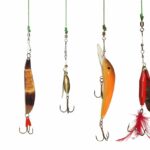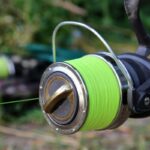Although jigging is not a new technique, it’s recently experienced a form of renaissance thanks to rod and reel improvements. If you’re an angler on a budget and want to give jigging an attempt, you may have wondered if you need special gear and if not, can you use a casting rod for jigging?
Jigging with a casting rod is possible but not easy and is often left to experienced anglers. For effective jigging, anglers prefer fast-action rods that maximize sensitivity. The fundamental issue with casting rods is that they are more difficult to learn with, and their reels are less forgiving.
New anglers often struggle with using casting rods for jigging and find that spinning rods are better suited to their needs. However, that doesn’t mean that casters are complete “no-goes,” as experienced anglers often prefer casting rods for jigging. This article explores some of the benefits, drawbacks, and gear requirements.
The Ups And Downs Of Jigging With A Casting Rod
While there are specialized jigging rods (which are overhead/casting rod designs), regular overhead/casting rods will do the job if your budget does not allow it. However, a specialized rod gives anglers a more sensitive tip, more power to fight large fish, and a lightweight yet durable rod.
As their name suggests, casting rods excel in throwing bait, and most anglers employ pitching and flipping techniques to maximize distance. Casting rods are also fantastic for crankbaits.
Although not the easiest to learn with, experienced anglers frequently jig with casting rods, provided they have the correct gear.
It is important to remember that no matter what the “preferred” method for a particular rod is (provided you operate within the rod’s specifications), personal choice and comfort are the most important factors when choosing a rod.
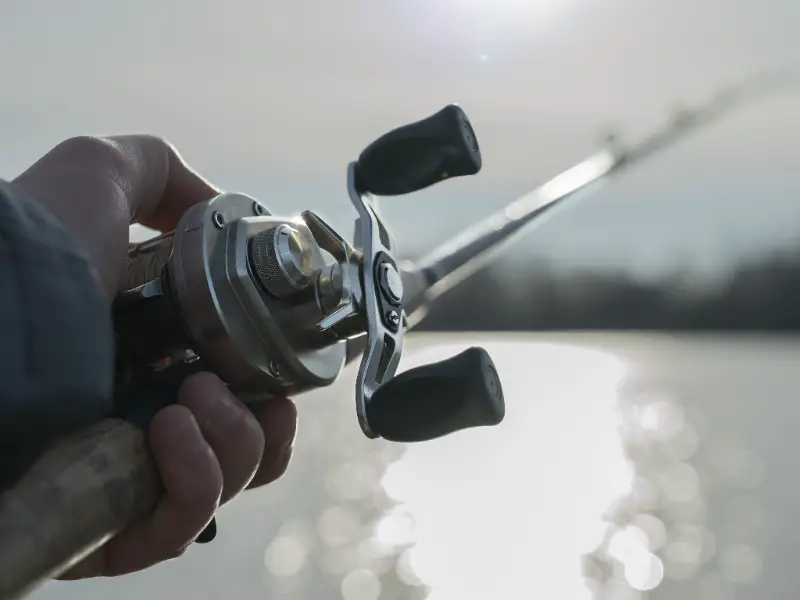
How Do I Use A Casting Rod For Jigging?
Anglers tap into the superior power when jigging with a casting rod. Anglers use several jigging techniques, including:
- Vertical/Mechanical jigging: Armed with heavyweight slab spoons, bass anglers often use casting rods for vertical jigging. Not limited to bass, this technique works for fresh and saltwater species.
- Slow-pitch jigs: This technique is great for slowly drifting along on the current, particularly when targeting fish closer to the sea floor.
Jigging with a casting rod is not limited to these techniques; however, they are popular as they yield fantastic results. Your experience as an angler significantly affects how well any technique works.
If you’re a new angler and are interested in jigging, try joining with experienced individuals and get a feel for what they do.
Alternatively, you can join a fishing charter, and they’ll take you jigging for the day, where you can try out their rods and see what works best.
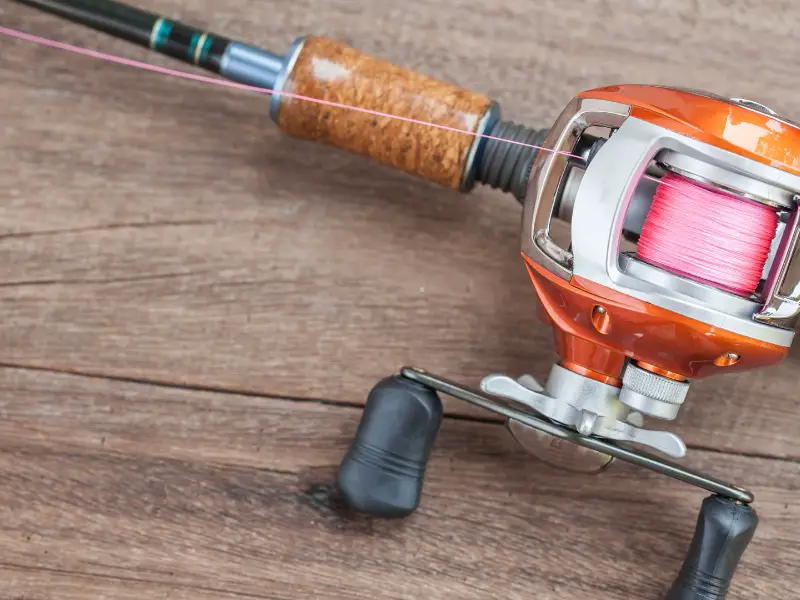
Gear Requirements For Jigging With A Casting Rod
To effectively jig with a casting rod, you’ll need a specific rod and gear set up, including:
- A rod length of between 5′ and 7’5″. Rod length is personal preference-based, but shorter rods are more manageable when jigging and perform better (less prone to breaking).
- It would be best if you had a moderate-high to high action rod. Higher action rods allow anglers to feel bites and react quicker, setting the hook in the fish’s mouth. Jigging requires significant movement, and a higher action is necessary to get the most out of your rod.
- While not restricted to carbon fiber, it helps pick up on “cautious” bites. Carbon fiber is better at transferring vibrations than fiberglass, so most anglers prefer at least a composite (mixture) rod.
However, fiberglass weighs more than carbon fiber at the same strength, so many anglers opt for carbon fiber to save on weight.
- You’ll want either lever drag or star drag reels when using casting reels. These are conventional-type reels and are ideal for stronger fish.
- Make sure you buy good quality gear. Although you won’t need “top-shelf” gear, jigging takes a tremendous toll on your fishing equipment, so you’ll need a good quality rod and reel to get sufficient use out of it.
The Pros And Cons Of Using A Casting Rod For Jigging
To fully appreciate why anglers do and don’t use casting rods for jigging, you’ll need to explore the pros and cons of these rods.
The Pros Of Using A Casting Rod For Jigging
Casting rods are fantastic rods with many merits. Some of their features align with jigging, making them the ideal choice for experienced anglers.
Casting Rods Are Powerful
Thanks to their design and materials, casting rods are built for fighting large, tough fish. While jigging for large bass, or saltwater species, a casting rod can bring up behemoths without destroying your rod.
Casting Rods Have Better Accuracy
Casting rods are fantastic for getting the bait to where you want it. While jigging is usually not far from where you stand, occasionally, you’ll need to get your hook close to obstacles (plants, docks, rocks, etc.), and casting rods excel at accurately putting your jig where you need it.
The Reel And Guide Position
These rods are often spared “trauma” when a large/powerful fish takes your jig (when you’re unprepared) and slams your rod into the boat’s gunwale.
While not recommended with any rod type, casting rods are better off thanks to the reels and guides on top of the rod.
The Cons Of Using A Casting Rod For Jigging
Unfortunately, there are several reasons why casting rods are not at the top of everyone’s list of jigging rods. While they have several benefits, they also have some drawbacks.
Most Casting Rods Are Heavy
Jigging is a physically demanding form of fishing that requires almost constant movement on the angler’s part.
Most jigging gear is lightweight to accommodate anglers. Unfortunately, casting rods are often heavy (depending on the design, length, etc.)
Casting Rods Are More Likely To Experience Line Tangles
Due to how the fishing line comes off a casting reel, the line may tangle unless properly managed during use.
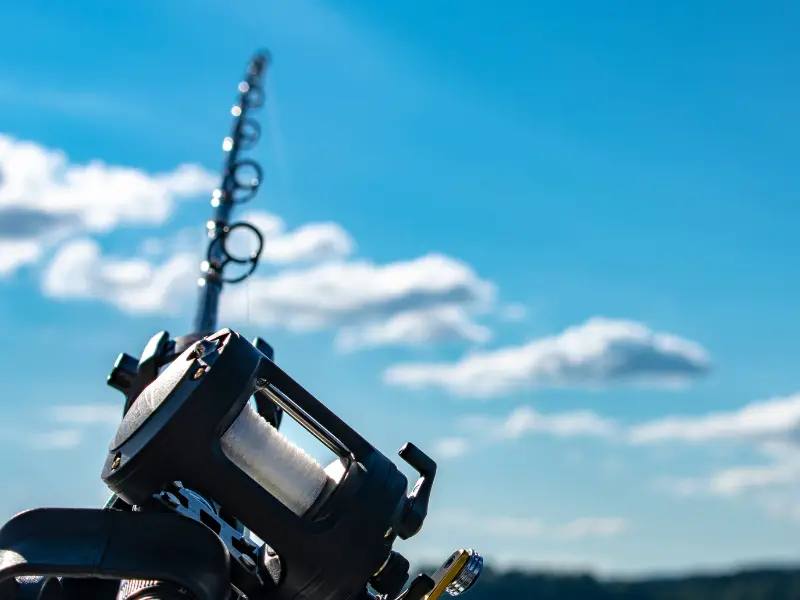
Casting Rods VS. Spinning Rods For Jigging
Many anglers prefer spinning rods for jigging thanks to their ease of use and versatility. That said, both spinning and casting rods work well when the angler puts in enough practice, and ultimately the rod you chose should be the one that suits your style best.
Some characteristics of these rods include the following:
Casting Rods Have A Slower Jig Descent
Unfortunately, casting reels are slightly slower than spinning reels in releasing the fishing line from the spool. Spinning rods allow the jig to drop faster than casting rods, which can make a significant difference depending on your jigging technique.
Spinning Rods Are More Versatile
The benefit of spinning rods is that you’re not “locked into” a fishing technique. With some slight gear adjustments, you can quickly change your style from jigging to casting to top water, etc. A casting rod is not as versatile, so if you’re not having much luck with jigging, hopefully, you brought a spare rod.
Spinning Rods Are More Beginner Friendly
For many aspiring anglers, casting rods are a daunting challenge, while spinning rods are relatively easy to pick up and use (the learning curve is steeper on a casting rod).
Spinning Rods Are Often Cheaper Than Casting Rods
The other significant consideration is your budget. While having one of every rod would be fantastic, unfortunately, most of us can’t afford such luxuries and must choose.
Thanks to spinning rods’ versatility, ease of use, and lower price tags, they often win the debate of “which to pick.”
Conclusion
While most new anglers prefer spinning rods for jigging, casting rods are equally effective. Their sturdy design allows anglers to pull in strong, large fish. While the learning curve is slightly higher on a casting rod, many experienced anglers prefer them. The important thing is to pick a rod that feels right and keep practicing until you perfect the technique.
- Do You Need An Indicator For Nymph Fishing? - November 16, 2023
- Fishing Safety Tips For Families - September 25, 2023
- What Is The Best Time To Night Fish At A Lake? - September 18, 2023



![Types of Fishing Rods [A Guide For Beginners] types of fishing rods](https://irvinelake.net/wp-content/uploads/2022/10/types-of-fishing-rods-1-150x150.png)

